2,4-Dinitroaniline
- CAS NO.:97-02-9
- Empirical Formula: C6H5N3O4
- Molecular Weight: 183.12
- MDL number: MFCD00007151
- EINECS: 202-553-5
- SAFETY DATA SHEET (SDS)
- Update Date: 2025-09-25 17:15:13

What is 2,4-Dinitroaniline?
Chemical properties
yellow crystalline solid
The Uses of 2,4-Dinitroaniline
2,4-Dinitroaniline is a nitro substituted benzamide derivative with anti-inflammatory activities in vitro.
What are the applications of Application
2,4-Dinitroaniline is an important intermediate in the preparation of various industrially important chemicals
Definition
ChEBI: 2,4-dinitroaniline is a nitroaniline consisting of an aniline core having two nitro substituents located at the 2- and 4-positions.
Production Methods
2,4-Dinitrochlorobenzene is aminated with aqueous ammonia initially at 70 ℃; then the temperature is allowed to rise gradually to 120 ℃ to complete the reaction. Only a low-pressure autoclave is required, compared with the amination of 2- chloro- and 4- chloronitrobenzene.
General Description
Yellow powder or crystals with a musty odor. Sinks in water.
Air & Water Reactions
Insoluble in water.
Reactivity Profile
2,4-Dinitroaniline may decompose violently at elevated temperatures. 2,4-Dinitroaniline can react with oxidizing materials, i.e. chlorine/hydrochloric acid. . In mixture with powdered charcoal ignited upon heating, [Cahiers, 1980, (99), 278].
Health Hazard
May cause headache, nausea, stupor. Irritating to skin and mucous membrane.
Potential Exposure
Agricultural Chemical; Mutagen; Reproductive Effector; Primary Irritant. Used as a corrosion inhibitor, as a dye or pigment intermediate, as a toner pigment in printing inks.
First aid
If this chemical gets into the eyes, remove any contact lenses at once and irrigate immediately for at least 15 min, occasionally lifting upper and lower lids. Seek medical attention immediately. If this chemical contacts the skin, remove contaminated clothing and wash immediately with soap and water. Seek medical attention immediately. If this chemical has been inhaled, remove from exposure, begin rescue breathing (using universal precautions, including resuscitation mask) if breathing has stopped and CPR if heart action has stopped. Transfer promptly to a medical facility. When this chemical has been swallowed, get medical attention. Give large quantities of water and induce vomiting. Do not make an unconscious person vomit. In the case of poisoning, special first aid is required; antidotes for the formation of methemoglobin should be available, including instructions. Note to physician: Treat for methemoglobinemia. Spectrophotometry may be required for precise determination of levels of methemoglobinemia in urine.
Storage
(1) Color Code—Yellow Stripe: Reactivity Hazard; Store separately in an area isolated from flammables, com bustibles, or other yellow-coded materials. (2) Color Code— Blue: Health Hazard/Poison: Store in a secure poison loca tion. Prior to working with DNA you should be trained on its proper handling and storage. Before entering confined space where DNA may be present, check to make sure that an explosive concentration does not exist. Store in tightly closed containers in a cool, well-ventilated area away from oxidizers, strong acids, strong bases, and other incompatible materials listed above. Metal containers involving the transfer of this chemical should be grounded and bonded. Where possible, automatically pump liquid from drums or other storage containers to process containers. Drums must be equipped with self-closing valves, pressure vacuum bungs, and flame arrest ers. Use only nonsparking tools and equipment, espe cially when opening and closing containers of this chemical. Sources of ignition, such as smoking and open flames, are prohibited where this chemical is used, handled, or stored in a manner that could create a potential fire or explosion hazard.Wherever this chemical is used, handled, manufactured, or stored, use explosion-proof electrical equipment and fittings.
Shipping
This compound requires a shipping label of “POISONOUS/TOXIC MATERIALS.” Nitroanilines fall into Hazard Group 6.1 and Packing Group II.
Purification Methods
Crystallise the nitroaniline from boiling EtOH by adding one-third volume of H2O and cooling slowly. Dry it on a steam oven. The N-acetyl derivative has m 180o. [Beilstein 12 IV 1689.]
Incompatibilities
Decomposes in moderate heat forming toxic vapors that form an explosive mixture with air. Violent reaction with strong oxidizers, strong acids, strong bases, acid chlorides, acid anhydrides, and chloroformates.
Properties of 2,4-Dinitroaniline
| Melting point: | 177 °C |
| Boiling point: | 316.77°C (rough estimate) |
| Density | 1,61 g/cm3 |
| refractive index | 1.6910 (estimate) |
| Flash point: | 224 °C |
| storage temp. | Flammables area |
| solubility | DMSO (Slightly), Methanol (Slightly) |
| pka | pK1:-14.25(+1) (25°C) |
| form | Crystalline Powder |
| color | Yellow to yellow-green or yellow-brown |
| Water Solubility | 0.06 g/L (20 ºC) |
| Merck | 14,3270 |
| BRN | 982999 |
| Stability: | Stable. Incompatible with oxidizing agents. May decompose violently at elevated temperatures. |
| CAS DataBase Reference | 97-02-9(CAS DataBase Reference) |
| NIST Chemistry Reference | Benzenamine, 2,4-dinitro-(97-02-9) |
| EPA Substance Registry System | 2,4-Dinitroaniline (97-02-9) |
Safety information for 2,4-Dinitroaniline
| Signal word | Danger |
| Pictogram(s) |
 Skull and Crossbones Acute Toxicity GHS06  Health Hazard GHS08  Environment GHS09 |
| GHS Hazard Statements |
H373:Specific target organ toxicity, repeated exposure H411:Hazardous to the aquatic environment, long-term hazard |
| Precautionary Statement Codes |
P262:Do not get in eyes, on skin, or on clothing. P264:Wash hands thoroughly after handling. P264:Wash skin thouroughly after handling. P273:Avoid release to the environment. P280:Wear protective gloves/protective clothing/eye protection/face protection. |
Computed Descriptors for 2,4-Dinitroaniline
2,4-Dinitroaniline manufacturer
New Products
4,4-Difluoropiperidine hydrochloride tert-butyl 9-methoxy-3-azaspiro[5.5]undecane-3-carboxylate Indole Methyl Resin N-Isopropylurea N,N-Dicyclohexylcarbodiimide(DCC) MELDRUMS ACID 5-METHYLISOXAZOLE-4-CARBOXYLIC ACID Magnessium Bis glycinate Zinc ascorbate 1-bromo-2-butyne 2-acetamidophenol 9(10H)-anthracenone Erythrosin B, 4-Piperidinopiperidine 2-((4-morpholinophenylamino) (methylthio) methylene) malononitrile 2,4-dihydroxybenzaldehyde 3-(4-morpholinophenylamino)-5-amino-1H-pyrazole-4-carbonitrile Methyl 2-methylquinoline-6-carboxylate 2,6-dichloro-4-nitropyridine 4-Bromo-2-chlorobenzonitrile 2-(benzylamino)acetic acid hydrochloride 4-(tert-Butoxycarbonylamino)but- 2-ynoic acid 3,4-dihydro-2H-benzo[b][1,4]dioxepine 1-Phenyl-1-cycloprppanecarboxylicacidRelated products of tetrahydrofuran
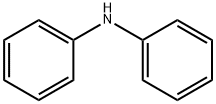

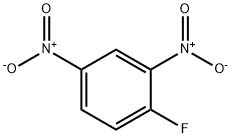
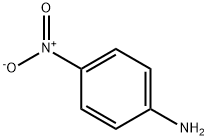

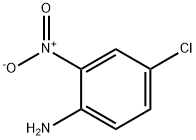

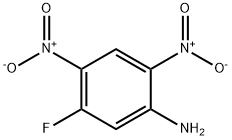
You may like
-
 2,4-Dinitroaniline pure CAS 97-02-9View Details
2,4-Dinitroaniline pure CAS 97-02-9View Details
97-02-9 -
 2,4-Dinitroaniline CAS 97-02-9View Details
2,4-Dinitroaniline CAS 97-02-9View Details
97-02-9 -
 2,4-Dinitroaniline CAS 97-02-9View Details
2,4-Dinitroaniline CAS 97-02-9View Details
97-02-9 -
 2,4-DINITRO ANILINE For Synthesis CAS 97-02-9View Details
2,4-DINITRO ANILINE For Synthesis CAS 97-02-9View Details
97-02-9 -
 2,4-Dinitroaniline CAS 97-02-9View Details
2,4-Dinitroaniline CAS 97-02-9View Details
97-02-9 -
 2 4 DinitroanilineView Details
2 4 DinitroanilineView Details
97-02-9 -
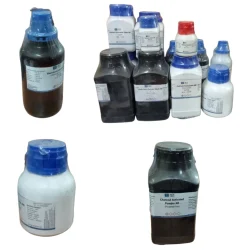 250gm 2,4-DINITRO ANILINE For Synthesis 1089View Details
250gm 2,4-DINITRO ANILINE For Synthesis 1089View Details
97-02-9 -
 20677-73-0 (2,2-diethoxyethyl)methylamine 98%View Details
20677-73-0 (2,2-diethoxyethyl)methylamine 98%View Details
20677-73-0
